Ten Questions With… Anton Pustovoyt (Pixel Night)
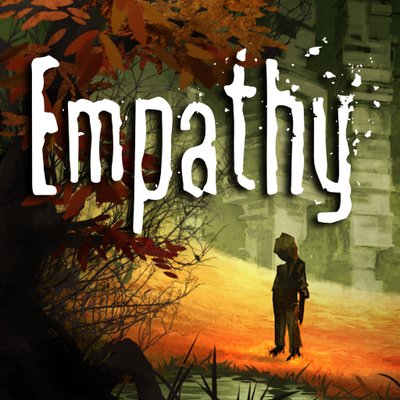
Facebook
Like Empathy: Path of Whispers on Facebook
Twitter
Follow Empathy: Path of Whispers on Twitter
Website
Check out the official Empathy: Path of Whispers Website
Discussion
Give the developers feedback on the Steam Discussion Page
Purchase
Buy your copy on the Steam Store page
We recently played Empathy: Path of Whispers and found an intriguing title with a gameworld begging to be explored instead of simply admired from afar like in similar titles. It also features a storyline that dares to be different and trusts players to piece together the puzzle themselves instead of having everything spelled out. It is hard to believe that such an ambitious title started out as a graduation project, but Anton Pustovoyt from Pixel Night was kind enough to tell us more about the game and what makes it so unique.
Can you give our readers a quick introduction of yourself and the studio?
Hello! I’m Anton Pustovoyt, 27 year old game developer from Stockholm, Sweden. Empathy was originally my graduation project, which after two years of slow-paced prototyping and testing, we decided to take to the next level, signed a publishing agreement with Iceberg Interactive and formed Pixel Night in 2015.
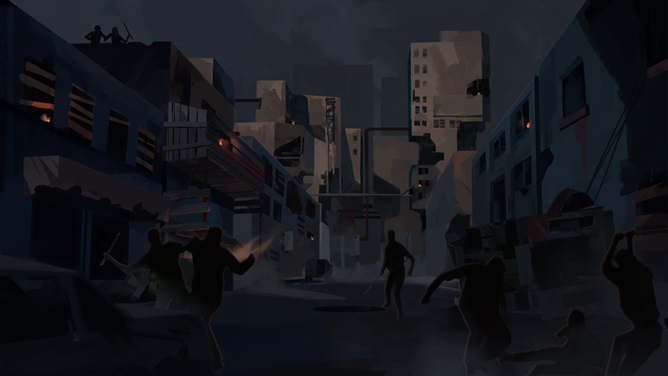
How did the idea for Empathy: Path of Whispers come about?
We wanted to make a game that takes the player through the last moments of a dying world, highlighting its beauty and showing different sides to the human nature and motivations behind the actions of the characters that were part of that world.
That idea went through several iterations, where we tested not only different mechanics, but also different genres (the game started as point and click), in order to achieve the experience we were after. Already from the beginning, we knew that memories and emotions would be at the core of the game, but were looking for a while exactly how to represent them through the gameplay, until we arrived at the current mechanics.
What was the biggest challenge while creating Empathy?
The main design challenge in Empathy was combining story telling with the more open nature of the game’s level. From the very start, we wanted to allow players a certain freedom of exploration, but with it came the challenge of how to direct them to the points of interest in the large 3D world of Empathy, so they would not feel too lost.
A traditional mini-map would not work, as it does not convey the height differences in the levels, thus not properly representing an object’s true location in a 3D space. Another approach was we considered was a sort of “sonar vision”, but that had own issues of not alerting players to objects behind them, and felt not appropriate for the game’s settings. In the end, we settled on the game’s current mechanic of the radar gadget, which could both handle the 3D locations and fit seamlessly into the game’s settings and story.
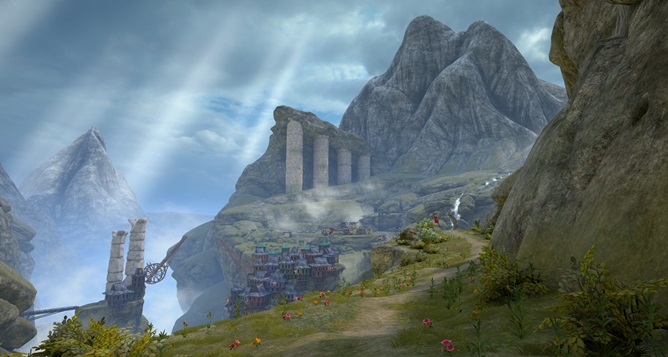
What is it that sets Empathy apart from other titles in the genre?
The game’s biggest challenge of its open and large levels is also one of its primary unique aspects. Instead of a strict tailored path through the environments and narration, often found in similar titles, Empathy features a much more open level design, inviting the players to explore and experience the story in their own way, with lots of optional story-telling content to discover.
The story in Empathy focuses on the larger aspects of human nature and morality, which we felt was best told through many small stories of intrigues, local conflicts and complex relationships. This approach, in contrast to a single personal story found in many similar titles, was better suited to our goal of giving multiple perspectives on the same issues.
The game features a lot of diverse voice acting. Did you have specific voices in mind when creating the characters and story?
While we did not originally have specific kind voices (or voice actors) in mind when we first started writing our characters, we certainly did by the end of it, once each character’s personality became more developed, and their dialogues were finished.
There are few characters that had certain “technical” behavior obvious from the start, such as Lara’s vocal tics, or Marcus’ sluggish speech. However, the more involved we got with the characters, the more we locked in on a certain “kind” of voice for them we pictured in our head each time we read their lines, which later proved to be an additional challenge for the actor casting.
Grigori came to sound in a dry and light voice, almost void of emotions. Artem had a certain warmth to his otherwise bassy voice. Andrei had a bit of a relaxed “surfer dude” vibe to him, rarely caring about what was going on, which we wanted to be clear in not only his dialogues, but also attitude in the voice.
It took us and voice actors quite a bit of work to get those nuances right, but it was worth it, although some actors were certainly frustrated with our nitpicking by the end of it. After all, there’s only so many times you can repeat “What’s that, babe?” before you start regretting your career choices.
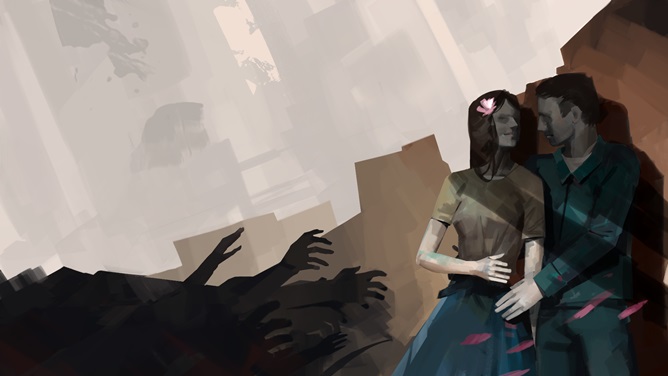
What was the inspiration behind the different environments found in Empathy?
Myself being Russian, many small details in the first environment take their inspiration from eastern-European culture and architecture. Inspiration to the second environment, ancient and lush mountains, were Scottish highlands, as we wanted to achieve contrast to the first part of the game, a sense of hope, to go along with the story.
Our goal with the environments was to keep them surreal, but still a bit grounded in reality, so when you look at them, you’d think “Huh, this is weird, but not completely impossible”. There’s also a touch of Stalker to the game, a title we’re big fans of.
What are your personal favorite moments in the game?
Without doubt, it is when the player opens the door leading to the attic at the start of the game, only to find themselves on top of a ruined building, with empty doorway behind and a giant Atlas Statue holding up the first level of the game in front.
It’s a strong scene that sets both the tone for the game, and kickstarts the mystery players will be unfolding throughout it. That particular scene was planned already in the prototype of the game, and is likely the oldest piece of “content”.
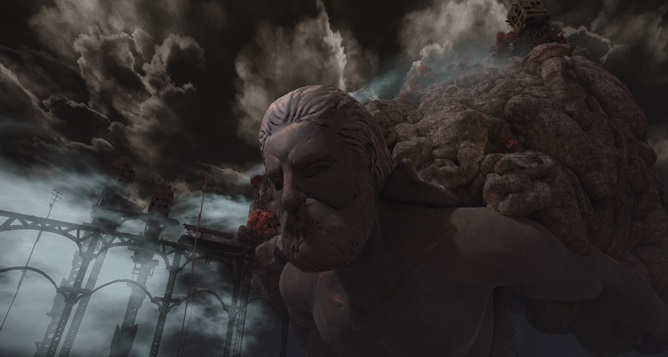
What are the future plans for Empathy/Pixel Night?
Right now, we’re still focusing on Empathy, having just released an update to the game with an improved save slot system and many fixes, and will now be updating to the latest engine version and potentially be looking into Xbox port.
As for company’s long-term plans, we’re already setting sighs onto next title, where we continue exploring new ways of storytelling, but in a different genre. Personally, what interests me most in games is the worlds that they take place in. Worlds that stimulate the player’s mind and are interesting to just.. be in, to explore and to understand, to be part of.
With Pixel Night, our goal is to create such worlds; treating the whole game as a single experience that we want our players to engage in, rather than focusing on a single specific game mechanic. Empathy was the first such experience, one of desolation and abandonment, but we are not going to limit ourselves to a single genre and design with future titles, exploring new options and approaches to achieve different kinds of experiences.
What is the most unusual thing on your desk right now?
This.. holder-magnifying-glass-thingy. I got it from my grandfather; it was probably used for something sciency, while I’m using it to hold notes or bills so I don’t forget to take care of them.
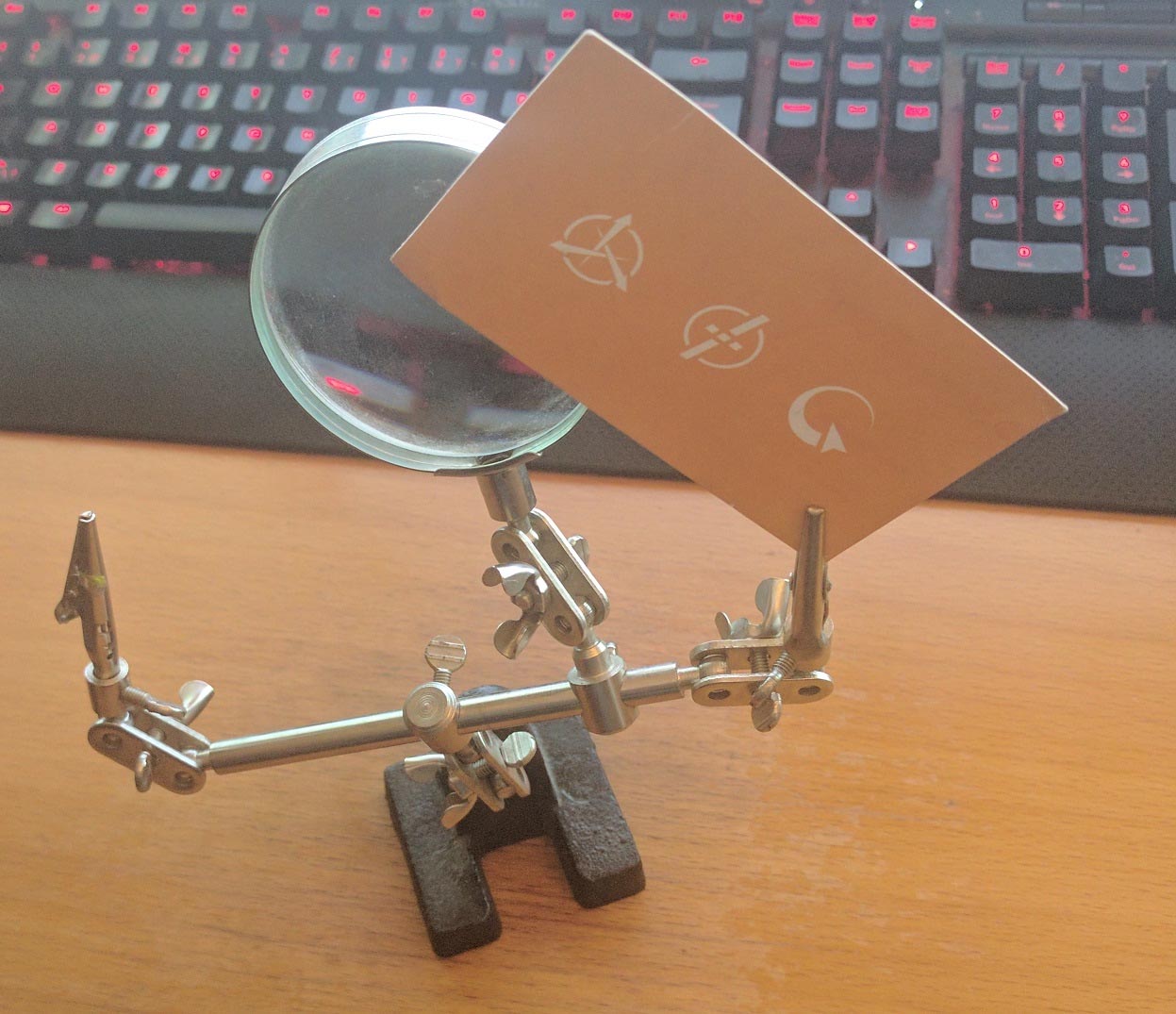
Anything else you would like to add?
Jar Jar Binks deserves more credit than he gets!
Although we don’t share his sentiment about Jar Jar Binks, we would like to thank Anton for taking the time to answer our questions. Empathy: Path of Whispers is available now from Steam and the latest patch addressed many of the issues that we had with the game. Check out our review HERE and don’t forget to follow the game on social media via the links above.








ePICa May 30, 2017
Oh this sounds nice I think I’ll add it to my wishlist – Jar Jar WHAT! – nope nope nope. /jk
rocheckle May 30, 2017
This game costs a little more than what Im typically comfortable paying for a indie title. It does however look neat. Anton what guarentee do I have that it is not going to be in a dollar indie bundle as soon as i plop down cash for it?
Anton May 31, 2017
That’s up to our publisher, rather than us, so I can’t really tell. If you are uncomfortable with the price, you may want to wait or not for a sale that may or may not come in the future 🙂
FrederickF May 31, 2017
That magnifying glass thingy is actually the SE MZ101B Helping Hand from SE. They sell for about $10 and are mostly used by electricians and jewelers. I bought one because I wanted to use it for soldering, but its too light and mine kept falling over all the time.
Anton May 31, 2017
So THAT’S what it is! Mystery solved, thank you.
Sydney23 May 31, 2017
I hope the game has a nice discount during the steam summer sale that is just around the corner hint hint.
jimarin May 31, 2017
Honestly the future for this kind of games lies in VR. Think about it, all you do is walk around and look at things and that is boring on a screen but if you are able to put on a headset and really experience everything around you it would be amazing.
Anton May 31, 2017
VR would definitely be cool! However, it requires lots of changes, such as a different menu and a new navigation system to deal with motion sickness, so it’s not something we had time to implement before release. It is however something we will look into during the summer as we’ve already got Oculus devkits ready.